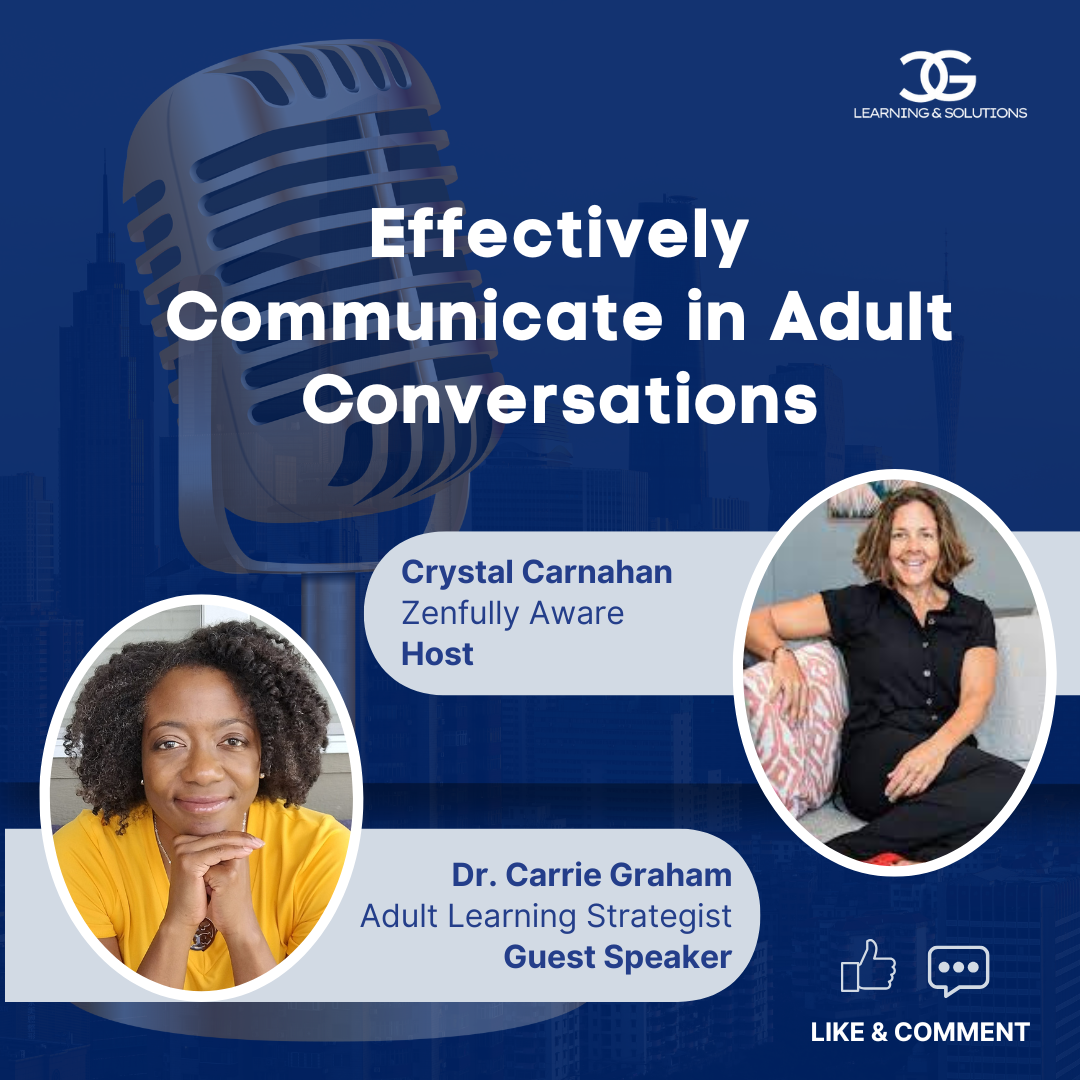Episode Summary
This episode features Dr. Carrie Graham, a communications expert and adult learning specialist, discussing the critical importance of effective communication in training and development. Dr. Graham shares her journey from sports medicine and healthcare to becoming a PhD-holding expert in adult learning theory, workplace learning, and mentoring. The conversation explores how language and communication styles must be adapted for different audiences, the differences between teaching children versus adults, and practical strategies for course creators and business leaders to empower employees through more effective training programs.
Listen Here > https://www.youtube.com/watch?v=hUfuixPo0MM&t=7s
10 Key Points
- Adult Learning Differs Fundamentally from Child Learning: Adults bring rich life experiences to learning situations, unlike children who are "blank slates." This requires a completely different approach to training and development.
- Language Creates Connection or Barriers: The specific words and terminology used in professional development can either facilitate understanding or create confusion, especially when working across diverse ethnic identities and cultural backgrounds.
- Context-Dependent Communication is Essential: Effective leaders must adapt their communication style based on their audience - the same information requires different presentation approaches for different groups.
- Comfort and Strength are Equally Valuable: In leadership development, recognizing both personal comfort zones and natural strengths creates a more authentic and effective training experience.
- Adult Learners Need Active Participation: Simply presenting information to adults is ineffective; they need to be active participants in their professional development plan rather than passive recipients.
- Code-Switching is a Professional Reality: Many professionals, particularly those from diverse backgrounds, must adapt their communication style depending on their workplace environment and audience.
- Curriculum Design Requires Flexibility: Effective training and development programs must be tailored to individual needs, pace, and life circumstances rather than following a one-size-fits-all approach.
- Cultural Sensitivity Enhances Learning: Training programs that acknowledge and honor different cultural identities and experiences are more effective at engaging diverse employee groups.
- Personality Should Enhance, Not Dominate: Effective trainers and leaders allow their authentic personality to connect with others while keeping the focus on the learner's needs, not their own expertise.
- Business Sustainability Requires Boundaries: Successful training and development professionals must balance their desire to help everyone with the business reality of maintaining profitable, sustainable operations.
10 Takeaways/Action Items
- Assess Your Training Approach: Review your current training and development programs to ensure they're designed for adult learners, not using child-focused teaching methods.
- Audit Your Language: Spend one day being mindful of the language you use in professional settings. Ask for clarification when needed and avoid assumptions about understanding.
- Identify Your Comfort and Strength Balance: Before your next presentation or training session, list what makes you comfortable and identify your natural leadership qualities to leverage both effectively.
- Tailor Content to Your Audience: Develop different versions of your key messages - one for general consumption and detailed versions for specific professional development contexts.
- Create Active Learning Experiences: Transform passive information delivery into interactive experiences that engage employees as active participants in their own development.
- Develop Cultural Competency: When designing training programs, use inclusive language that acknowledges diverse ethnic identities rather than grouping people into broad categories.
- Focus on Learner Needs: Shift your training approach from "I believe/I think" statements to "What do you think?" questions that center on the employee's experience and perspective.
- Implement 90-Day Development Cycles: Consider structuring your professional development plans as focused 90-day programs that can be customized to individual employee needs and pace.
- Practice Intentional Communication: Before important conversations or training sessions, prepare by identifying your target audience and selecting appropriate language and examples.
- Establish Clear Business Boundaries: Define your ideal training clients and stick to those parameters while finding alternative ways to support others, ensuring your leadership development programs remain sustainable and effective.
This summary captures the essence of effective adult learning principles and communication strategies that can transform how organizations approach employee training and development, ultimately creating more empowered and skilled teams.
Resources
